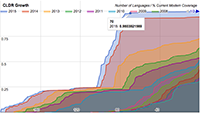 Unicode Standard Annex #29, Unicode Text Segmentation, will be updated for Unicode 9.0. A draft of the proposed update is available for general public review and comment.
Unicode Standard Annex #29, Unicode Text Segmentation, will be updated for Unicode 9.0. A draft of the proposed update is available for general public review and comment.The Word_Break classification of U+202F NARROW NO-BREAK SPACE (NNBSP) is revised to correct the text segmentation behavior of U+202F for Mongolian usage. For further background on this issue and possible ways to address it, see PRI #308, Property Change for U+202F NARROW NO-BREAK SPACE (NNBSP).
In this revision, the formerly empty Prepend class of the Grapheme_Cluster_Break property is redefined to consist of all prefixed format control characters and a few other characters with certain Indic_Syllabic_Category property values.
The corresponding property value changes will be incorporated in the UCD data files for Unicode 9.0.


 The Unicode Consortium is pleased to announce that
The Unicode Consortium is pleased to announce that  The Unicode Consortium is pleased to announce that Emoji One has joined as a supporting member. Emoji One is a small, independent group of emoji developers providing an open source emoji set for digital and non-digital use worldwide.
The Unicode Consortium is pleased to announce that Emoji One has joined as a supporting member. Emoji One is a small, independent group of emoji developers providing an open source emoji set for digital and non-digital use worldwide.

